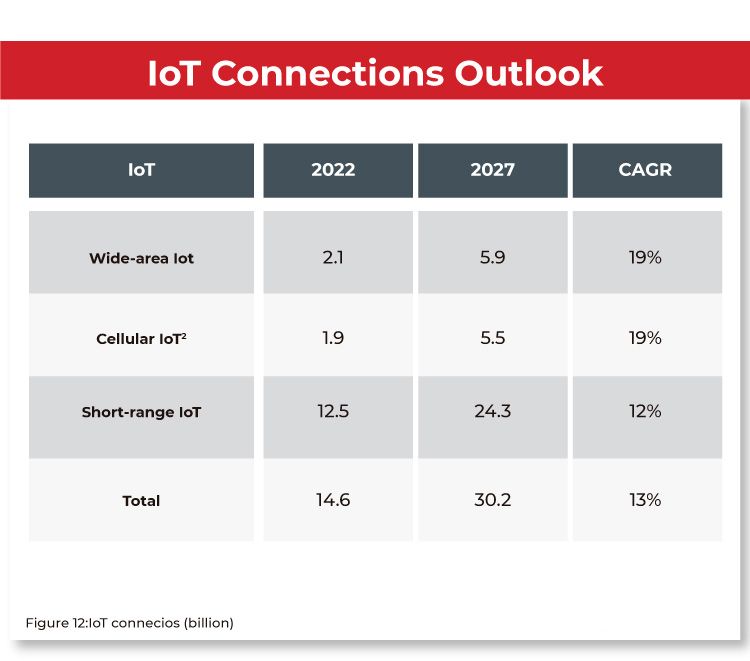The world is changing. With the advent of streaming data and the Internet of Things (IoT), we are now entering an era where data is streaming in at an unprecedented rate. According to a recent Ericsson Mobility report, there were 14.6 billion IoT connections in May 2022. This is projected to balloon to over 30.2 billion connections by 2027, a growth of 13% CAGR. The fastest growth is occurring in Wide Area IoT application development and Cellular IoT2 connections.

Image source: Ericsson.com
This has led to a new wave of innovation in the world of IoT application development.
The IoT Data Volume Challenge
IoT and technologies that support it, such as 5G, have created a new problem – ingesting processing and analyzing the huge data streams generated by IoT devices.
Let’s take the example of a small retail outlet of a supermarket chain. The shop may have dozens of sensors to capture data from customer traffic to temperature and humidity. For illustration, let’s assume the store has 30 sensors. That’s 30 times 60 values per second – because the sensor generates a continuous flow of real-time data at one or even more logs per second. To get the daily value, multiply the resulting value of 1,800 by 60 minutes and then by 12 hours. In our case, this comes to 1,296,000 values for a single store daily. Assume the retail chain has hundreds or thousands of stores around the country, and you begin to appreciate the scale of the data problem.
How Streaming Data Tools Bring Back Sanity
Streaming data tools have several features that help organizations ingest, process, and analyze streaming data.
- Real-time event monitoring allows you to monitor events as they happen, so you can take corrective action quickly.
- Streaming data is often unstructured, making it difficult to process and analyze. Streaming data tools can filter out the noise and provide only the data relevant to your needs.
- Streaming data tools can provide real-time alerts for anomalies and intrusions so you can take immediate action to mitigate the threat.
- Streaming data tools can provide you with actionable insights that you can use to improve your business and data visualization, which can help you understand the data and make better decisions.
- These tools are scalable and flexible, so you can use them to support a wide range of business needs.
- Streaming data tools must have robust security protocols that can help you protect your data.
- API-based Access is a must-have because it allows you to integrate the data into your existing systems.
- Streaming data tools have an AI-embedded engine to help you make better decisions.
- Finally, a good streaming data tool is cloud agnostic so that you can use it with any cloud-based infrastructure.
IoT is growing by leaps and bounds, with more and more devices being connected every day. This influx of data is both a blessing and a curse as businesses try to grapple with how to make use of all this information. If you’re looking for help sorting through all that data or need assistance developing an IoT application, Expeed is here to help. Contact us today to schedule a call.

